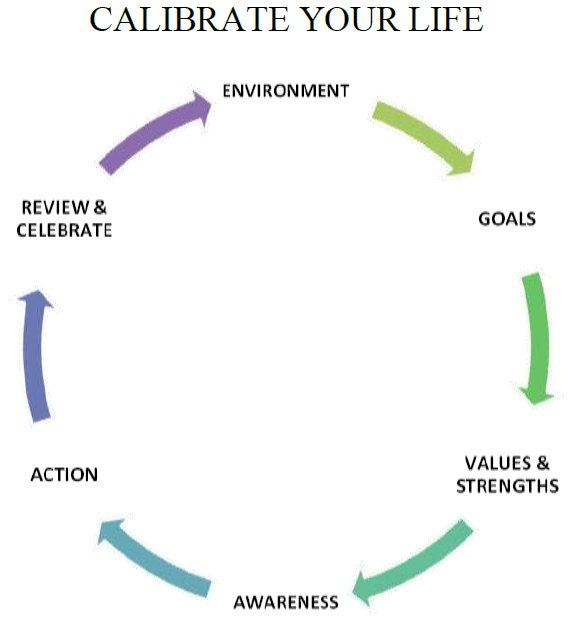A Coaching Model Created by Kelly Smales
(Life Coach, CANADA)
The title of this model pays tribute to my former life in Scientific Services where I have serviced and calibrated laboratory instruments for over two decades.
One day I suddenly realized that the process I use for calibrating instruments is quite similar to the process I use when coaching. This process seems to adapt well to most coaching situations.
In both the Instrument Calibration Process and the Calibrate Your Life Process it is imperative to establish an initial level of confidence in your ability to satisfy the needs of the client. This can be achieved by communicating your skills, experience and effectiveness through testimonials, referrals, highlighting your credentials or demonstrating your services.
Once the Client has expressed interest in your services, the Service or Coaching Agreement including fees and expectations should be clearly communicated and agreed upon by both parties.

 Certain attributes and behaviours of the Coach are to be demonstrated at every stage of the coaching process. These include being in the moment, listening actively, summarizing to ensure you understand what the client is saying and treating the client in an empathetic and respectful manner. The ICF and ICA Code of Ethics must be followed at all times.
Certain attributes and behaviours of the Coach are to be demonstrated at every stage of the coaching process. These include being in the moment, listening actively, summarizing to ensure you understand what the client is saying and treating the client in an empathetic and respectful manner. The ICF and ICA Code of Ethics must be followed at all times.
Prepare the Environment
Ensure the environment is one that will support Coaching. Be sure to pay special attention to creating a judgement-free, trusting space. This can be done through using active listening, respect, lightness, empathy, transparency and being authentic.
Determine Goals
Listens carefully to what the clients needs are. This may require resolution to a problem; want to achieve a goal or to find clarity about something. Summarize to ensure you understand their needs and desired outcome. The Client determines the content, while the Coach determines best process to be used.
Identify Values & Strengths
Identifying values and strengths of the Client is a great way to begin coaching. It helps the Coach and Client become familiar with one another. It gives a great foundation to help the Coach “hold the vision for the clients” and be sure it is in the alignment with the clients values. Also it can help build confidence in the Client and promote positivity, creativity and openness to change. This step also highlight if goals are not inline with the clients values. It is important to explore this with the Client at this point.
Create Awareness
Explore the clients goals in more details. Do a “gap analysis” to determine exactly where they are at this point and what they need to achieve their goals. Help them to open up to new learning and growth opportunities. Support the Client in becoming more aware of their behaviour, beliefs and perspectives including those that are no longer supporting them. This will require powerful listening and questioning. Challenging assumptions, visualization, reframing, and use of metaphors can also be used. Acknowledge the Client for their new awareness and shifts in perspective.
Take Action
Support and encourage the Client to take actions that will move them forward towards their goal. An environment of positivity and lightness is very helpful at this stage to promote creativity. This can be achieved by brainstorming, exploring alternative ideas and supporting self discovery. Develop a SMART action plan. Clearly request a commitment of action from the Client at this point. Encourage, enthuse and tell them you believe in them.
Review & Celebrate
Review action steps with the Client to see what they have learned and acknowledge their successes. Verify that action steps continue to lead to the Clients goal. Re -direct actions or goals if necessary. Celebrate! Acknowledge the Client for everything they have accomplished and how far they have come.